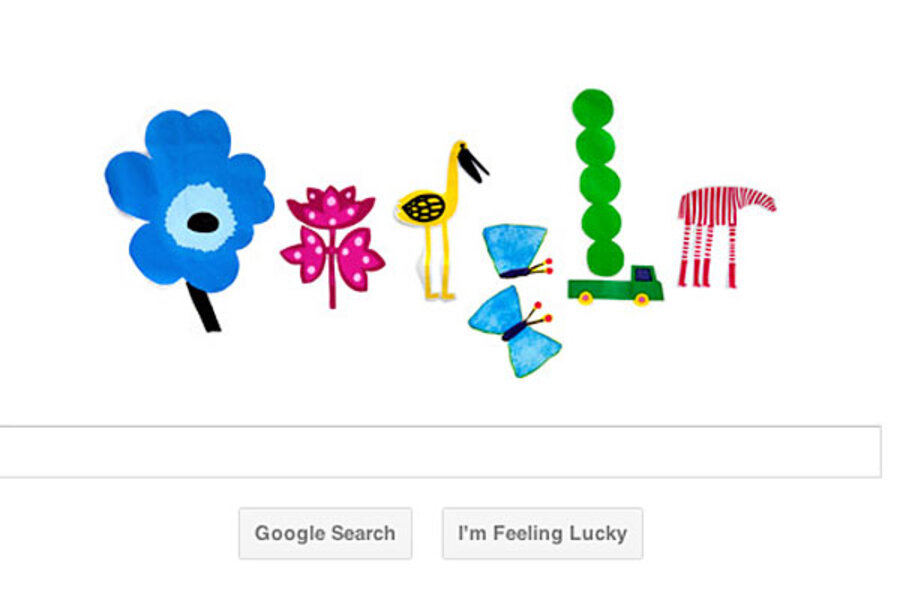Nothing says spring equinox like Marimekko
Loading...
Google celebrates the spring equinox – the first day of spring – with a splash of colors and designs by Marimekko, the Finnish design house.
If you are a fan of "Sex and the City," shop at Crate & Barrel, or remember the 1960 sartorial choices of Jacqueline Kennedy, you will recognize Marimekko's distinctive patterns.
Marimekko embrace of bold colors and design began in 1951. It was the middle of the post-World War II reconstruction, and founders Vilio and Armi Ratia tapped into Finland's longing for a fresh start and brighter colors.
Marimekko products – the name literally means "Mary’s dress" in Finnish – first gained fame beyond Scandinavia in 1957 when the company was invited to to a fashion exhibition in Milan, Italy. The show was cancelled, but the garments were showcased by Giorgio Armani, then store manager of Rinascente, a luxury department store in Milan.
Ratia’s entrepreneur acuteness combined with bold textile designs would transform the company into “one of the true icons of a very particular era: the idealistic, vibrant days of the 1960s” wrote Ivar Ekman in the New York Times.
With the vision of pioneering Finnish textile designers Maija Isola and Vuokko Nurmesniemi, Marimekko introduced bold fabrics that revolutionized the industry and became synonymous with dynamic women.
Ms. Isola designed the famous Unikko (poppy) print pattern in bold red, pink, and black on white, a pattern still in production. Nurmesniemi created the red-and-white striped Jokapoika shirt, a landmark product in the company’s history.
Marimekko entered the American market via its exclusive commercial representative, architect Benjamin C. Thompson, who displayed Marimekko products prominently in his Design Research retail stores. However, it was Jacqueline Kennedy who gave them nationwide fame during the 1960 presidential campaign when she was featured in a Life magazine cover wearing a Marimekko dress.
The company’s expansion continued and Crate and Barrel established a lasting business relationship with Marimekko that goes back in 1966.
Marimekko's own catalogue consists of clothing, interior decoration textiles, bags, and other accessories.
During the 1990s, the company experienced financial woes that brought it one step short of bankruptcy. But under the strong stewardship of Kirsti Paakkanen, Marimekko regained financial footing and its brand momentum.
In the late 1990s, the company resurged in popularity in the US with the help of the TV series "Sex and the City" when the main character, Carrie Bradshaw (played by Sarah Jessica Parker), repeatedly wore Marimekko clothes.
These days, with the rediscovery of the 1960s and 1970s fashion, Marimekko is again in the spotlight. “We have realized that hard-edged modernism needs softening, so that it gets a human feel. Marimekko does that very well," said design historian Charlotte Fiell, according to the New York Times.
The Helsinki-headquartered company has 90 stores around the globe.







